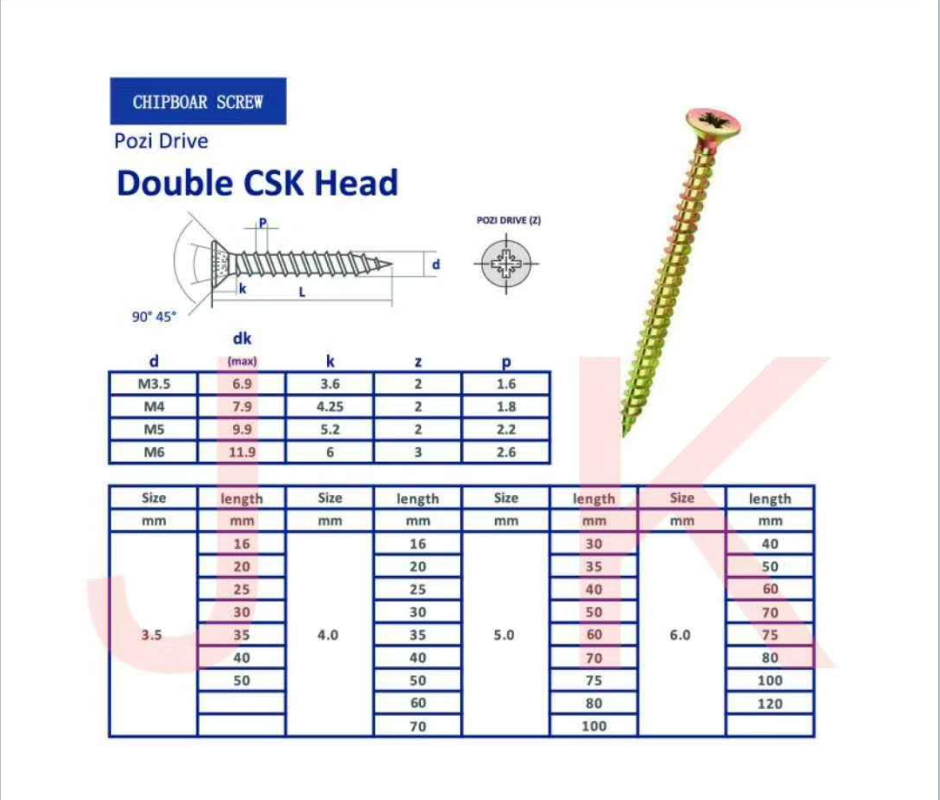Optimal Hole Size for Self-Tapping Screws in Plastic Applications
Understanding Self-Tapping Screws for Plastics Hole Sizes and Applications
Self-tapping screws are a crucial component in various assembly processes, particularly when it comes to joining materials like plastics. They are uniquely designed to create their own holes as they are driven into the material, eliminating the need for pre-drilled holes and streamlining the installation process. When working with plastics, selecting the appropriate hole size for self-tapping screws becomes essential to ensure optimal performance.
The Importance of Hole Size
Choosing the correct hole size is critical for several reasons. If the hole is too small, the screw may not be able to penetrate the material effectively, which can lead to stripped threads or potential damage to the plastic. On the other hand, if the hole is too large, the screw may not achieve a secure grip, resulting in a weak joint that can easily come apart under stress.
Typically, the hole size for self-tapping screws used in plastics can vary based on several factors including the screw diameter, the type of plastic being used, and the specific application. It is essential to consult manufacturer specifications and guidelines to determine the ideal hole size for the screws you intend to use.
Common Hole Sizes
In the realm of self-tapping screws for plastics, standard screw sizes often fall within several common diameters, ranging from 4 to 10 for smaller applications, to larger sizes like 12 or ¼ inch for heavy-duty usage
. The corresponding hole sizes typically vary by a few decimal points based on the diameter.For instance, a 6 self-tapping screw might require a pilot hole of approximately 0.080 inches in diameter. Conversely, a 10 screw might need a hole of about 0.130 inches. It's important to note these figures as general guidelines, as specific screw designs (like thread type and length) can affect the required pilot hole size.
china self tapping screw hole size for plastics

Types of Plastics Affecting Hole Sizes
Another important consideration is the type of plastic being used. Different plastics possess varying degrees of rigidity and thermal expansion properties, both of which influence how the screw interacts with the material. For example, softer plastics may allow for a smaller hole due to their flexibility, while harder plastics may require a slightly larger pilot hole to accommodate the threading of the screw without risk of cracking.
Additionally, some plastics can deform under constant pressure, making it crucial to understand how the screw will perform over time. For more demanding applications, it can be beneficial to use screws with finer threads, as these are typically better suited to hold in softer materials and can distribute load more evenly.
Application Considerations
When applying self-tapping screws in plastics, it is also essential to consider the application environment. Factors such as moisture, temperature fluctuations, and exposure to chemicals can affect the integrity of both the screw and the plastic. Therefore, using screws made from corrosion-resistant materials, such as stainless steel or coated variants, can be an effective strategy to enhance durability.
Moreover, the driving technique used when inserting self-tapping screws into plastics can impact performance and strength. It is advisable to use a controlled speed setting on power tools to prevent exceeding the torque limit, which could lead to material failure. A steady, cautious approach will ensure that the screws are installed efficiently and securely.
Conclusion
In summary, understanding the appropriate hole size for self-tapping screws in plastics is crucial to achieve robust and reliable assemblies. By carefully considering the screw size, types of plastics, and application conditions, manufacturers and builders can maximize the effectiveness of their installations. Remember to always refer to manufacturer specifications and guidelines, as well as conduct tests as necessary to ensure compatibility and strength in your projects. Whether you’re working with soft or hard plastics, the right self-tapping screw with the correct hole size can significantly contribute to the success of your applications.
-
Top Choices for Plasterboard FixingNewsDec.26,2024
-
The Versatility of Specialty WashersNewsDec.26,2024
-
Secure Your ProjectsNewsDec.26,2024
-
Essential Screws for Chipboard Flooring ProjectsNewsDec.26,2024
-
Choosing the Right Drywall ScrewsNewsDec.26,2024
-
Black Phosphate Screws for Superior PerformanceNewsDec.26,2024
-
The Versatile Choice of Nylon Flat Washers for Your NeedsNewsDec.18,2024










